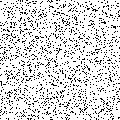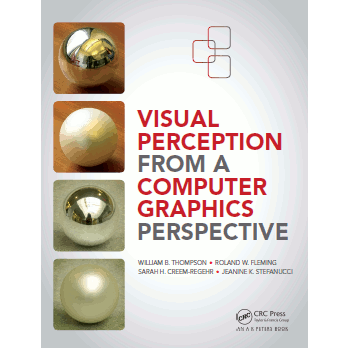
CS 5650/6650 -- Visual Perception from a Computer Graphics and Visualization Perspective
3 creditsFall, 2016: Monday, Wednesday, 11:50am-1:10pm, WEB L122
Qualified graduate students may register for this class as PSY 6951 section 5 (more information).
| Instructor: |
William
B. Thompson, MEB 3417 |
| Office hours: by arrangement |
|
|
|
[T]he design of effective visualizations is as much a challenge for cognitive science as for computer and information science, and ... these disciplines must collaborate closely on the development of new information technologies and visualization design.
Computer graphics produces images intended to be seen by people, yet relatively few practitioners in the field know much about the specifics of human vision. This course provides an introduction to human visual perception intended for those studying or working in the fields of computer graphics and visualization. The goal is to provide an understanding of human vision with a breadth and depth relevant to both the current state of the art in graphics and visualization and to future developments in those fields. More generally, the material presented is useful for those studying cognitive science, since there is coverage of several topics that are not commonly included in standard perception references along with a comprehensive overview of visual perception as a whole. Visual neuroscientists will find that the emphasis on visual performance complements studies of biological mechanisms. Finally, much of the material is relevant in motivating methods used in computer vision and image analysis.
Goals of the course:
- Provide a comprehensive overview of the phenomenology of visual perception, covering the spectrum from low-level sensory processing to high-level visual cognition.
- Provide application-relevant information for those working in computer graphics and visualization, along with foundational information for vision scientists.
- Supply necessary background material for those who need to dig more deeply into a particular topic involving visual perception.
The class will differ from more traditional introductory courses on visual perception in several important ways:
- The class will tie together image generation and the resulting perceptual phenomena, rather than having a focus only on the visual system itself.
- Topics will be included that are seldom if ever part of introductory perception presentations, including perception of material properties, illumination, the perception of pictorial space, image statistics, perception and action, and spatial cognition.
- The emphasis is on visual performance, with coverage of biological mechanisms in specific situations to add to the understanding of issues of practical importance.
 Required text:
W.B. Thompson, R.W. Fleming, S.H. Creem-Regehr,
and J.K. Stefanucci,Visual Perception from a Computer
Graphics Perspective, CRC Press, 2011.
[UofU
Bookstore]
[Amazon (Kindle)]
[B&N]
Required text:
W.B. Thompson, R.W. Fleming, S.H. Creem-Regehr,
and J.K. Stefanucci,Visual Perception from a Computer
Graphics Perspective, CRC Press, 2011.
[UofU
Bookstore]
[Amazon (Kindle)]
[B&N]
The class will consist of a mix of lectures, discussion, and student presentations on relevant articles from the computer graphics and perception research literatures.
No specific background or prerequisites are required to take the class, but some prior familiarity with computer graphics, visualization, computer vision, or perceptual psychology will be beneficial. No programming is involved. Qualified undergraduates should register for the class as CS5650. Graduate students should register for CS6650.
Course syllabus
Assignments
Presentation schedule (available only to those registered in the course)
College of Engineering academic guidelines
Suggested readings in vision science
Journals and conferences with significant vision science or perceptually-related computer graphics content
Demonstrations and illusions
Vision science resources

